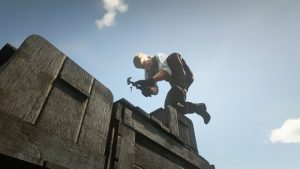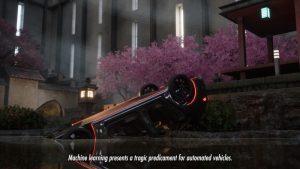GaMe!, a group exhibition you can check out until March 24 at the [DAM] gallery in Berlin, presents positions by six international artists on the subject of computer games and electronic toys.
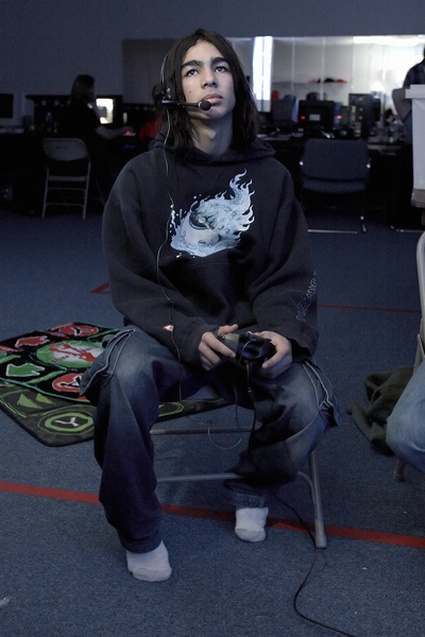 Todd Deutsch, a.k.a. KillerJ00, 2005
Todd Deutsch, a.k.a. KillerJ00, 2005
The show is rather small but it covers a surprisingly large spectrum of game art practices. More importantly, GaMe! is one of those rare exhibitions about game art which favours the artistic approach over the more accessible attractions of playfulness and interactivity.
You’ll understand immediately my point when i tell you that one of the games on show is all about mania, melancholia, and the creative process. The unassuming 8-bit graphics and very straightforward gameplay of Jason Rohrer‘s Gravitation offers a striking contrast to the poignant challenge that the player has to face: find the right balance -if there’s one- between family life and creative achievement.
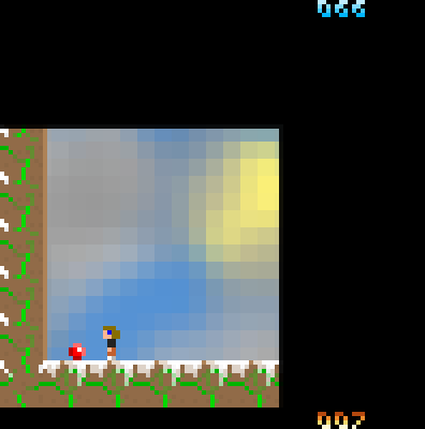 Jason Rohrer, Gravitation, 2008, computer game
Jason Rohrer, Gravitation, 2008, computer game
In order to get the stars (your own projects to develop) from the sky, you have to play ball with your kid to expand your view of a screen (aka the outside world) which is mostly dark at the beginning of the game. The higher you can jump, the more you get to discover the screen/outside world. The music closely adapts to your choices. Becoming either more cheerful as your vision of the world expands or colder as it shrinks back to black. As destructoid explains: Grabbing a star causes it to fall back to your home area (home life), where it becomes a difficult-to-move stone with a timer on it. Pushing a star stone into a fireplace earns you the amount of points still remaining on the stone (the quality of an idea deteriorates over time). Getting more than one star at once causes the star stones to build up, separating you from your son, whom you ironically need to play with in order to get more stars. Ultimately, the game shows that pursuing creative exploits both requires and alienates the people you love. Conversely, dedicating all your attention to your child means that your creative fervor will burn out. The morale of the story hurts but the work -which btw is autobiographical- was a great discovery for me.
Gravitation is available as a free download.
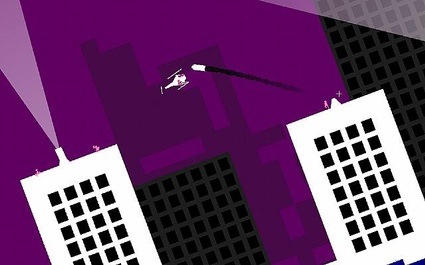 Mark Essen, The Thrill of Combat, 2009, computer game
Mark Essen, The Thrill of Combat, 2009, computer game
The Thrill of Combat, by Mark Essen, is much more fast-paced but not less atypical.
The player (or players) controls organ hunters aboard a helicopter with the goal to harvest a number of hearts, lungs, livers, kidneys, pancreata, and intestines. The organs don’t just lie around for you. You have to kill their owner first from the helicopter. When you’ve massacred enough people, you jump in parachute and start to open the corpses and remove the organs you need to complete your list of vital body parts. While keeping tabs on the helicopter. The Thrill of Combat is heartless, cynical, and submersed into a seducing block-coloured urban landscape.
I was more familiar with the work of the other artists invited to participate to the show:
Joan Leandre is showing the film In the name of Kernel Series – Lonely Record Sessions, Tale of Tales presents the eerie and incredibly alluring game The Graveyard, Todd Deutsch‘s Gamers ignore you superbly while France Cadet brought her wild robotic hunting trophies, the rocking Gaude Mihi and a series of serigraphs detailing her ‘genetically-modified’ robots.
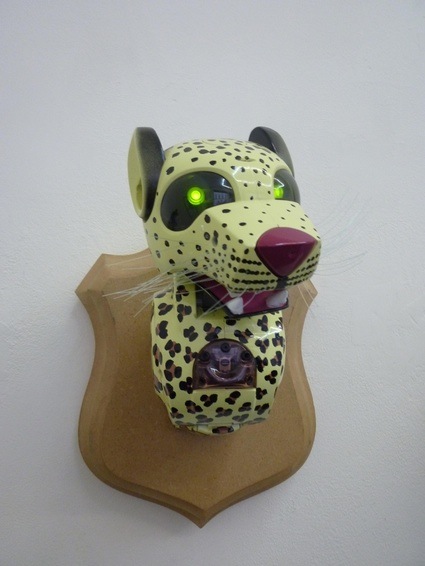 France Cadet, Panthera Pardus, series Hunting Trophies, 2008
France Cadet, Panthera Pardus, series Hunting Trophies, 2008
GaMe! is open until March 24 at the [DAM] gallery in Berlin.
Another game art exhibition currently open is Playlist – Playing Games, Music, Art at Laboral in Gijón, Spain.
Related entries: France Cadet solo show at the gallery numeriscausa in Paris; Homo Ludens Ludens – A conversation with curator Daphne Dragona; Book: Trigger Happy for free, etc.



